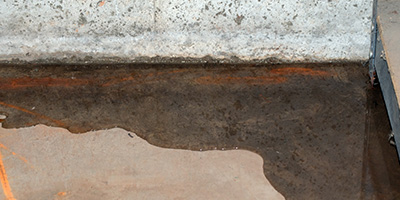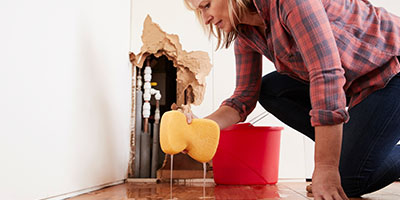How to Get Rid of Basement Odor (and Why It Smells in the First Place)

How to Get Rid of a Musty Basement Smell
Does your basement smell dank and stale, like a wet dog has been hanging around? An unpleasant, musty smell is usually the first sign of a more serious issue.
Basement odor removal is necessary to maintain your quality of life and the value of your home. This holds true whether your space is a finished living area or a storage room. Identifying and eliminating foul basement smells takes more than leaving a few air fresheners lying around. Read on for some ways you can get your basement smelling fresh.
Why Does My Basement Smell Musty?
Before you find a way to get the musty smell out of your basement, you need to figure out why it smells in the first place. Consider these common reasons why your basement has an unpleasant odor.
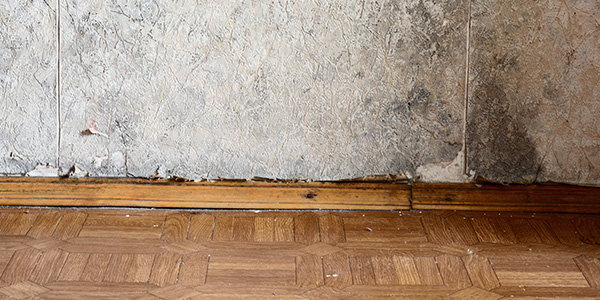
Mold and Mildew
Mold and mildew are the primary culprits for musty basement smells. Damp, dark spaces are the perfect breeding ground for mold spores and mildew. They spread across your basement floor, walls and ceiling, as well as anything you have stored nearby.
Mold is particularly bad news. It can lead to health concerns, from mild allergic symptoms to respiratory issues. Mold feeds on organic materials like wood and fabric, so it can lead to structural damage and stain basement surfaces.
If your basement flooded, you could have a significant mold situation that requires the attention of a professional. But you should be able to safely handle a small amount of mold on your own.
Before you go looking for these fungi, the EPA recommends wearing personal protective equipment. This includes gloves, an N-95 respirator and goggles or eye protection. Search your entire basement for black or green mold with a fuzzy appearance. Mildew is usually gray, white or light brown and can appear powdery. Both come with a stink.
Check furnishings and cardboard boxes in addition to floors, walls, ceilings and hidden corners. In finished basements, consider peeling back wallpaper and lifting carpet or flooring. Mold may have found its way between these materials and the bare surfaces. It can also feed on the adhesive.
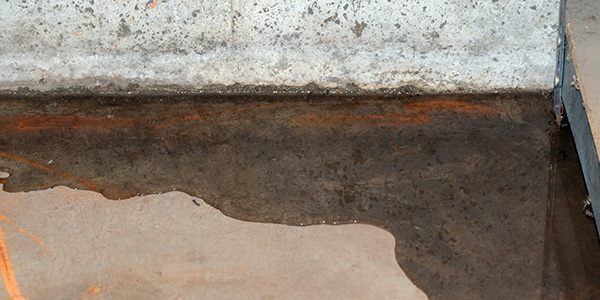
Dampness
General dampness in your basement is a key contributor to developing mold and mildew. But it can lead to basement odor by itself. Moisture in your basement can come from multiple sources.
- Pipes: Manage leaks from pipes as soon as possible. A consistent drip will run up your water bill and leave your basement damp. Leaks aren’t always as obvious as a dripping sound or visible drops of water falling from a pipe. Be on the lookout for wall discoloration or bubbling paint or wallpaper. These can indicate pipes leaking behind a wall. Inspect visible pipes, valves and connections for discoloration. This is a sign of oxidation and indicates a leak. Water condensation dripping from exposed pipes can also add to basement moisture.
- Foundation and Wall Cracks: If you notice a musty smell in your basement after rain, it may be a sign water is coming in through your foundation. Water leaks can come from cracks in your basement wall or seep up from cracks in the foundation. These will need the attention of a trained professional. Call a company that specializes in basement repairs and waterproofing. Look around the exterior of your foundation as well. Any cracks or damage to the concrete or brick are also warning signs.
- Windows: When it rains, does water run down your basement windows or pool underneath? If the seals are wearing down, that’s an easy way for water to get into your basement.
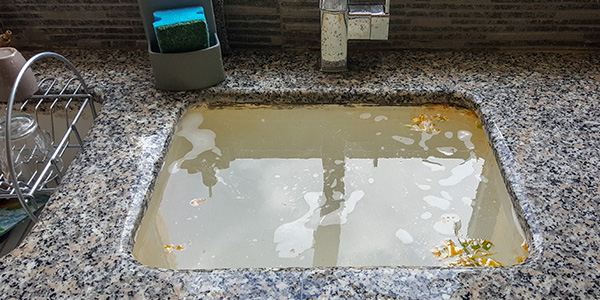
Sewage
It’s gross, but it happens. Major plumbing issues from the upstairs bathroom or kitchen can lead to a sewage odor from the drain pipes in the basement. Worse yet, you may find liquids and solids working their way out of the pipes.
If you notice any leaks coming from the sewage lines running through your basement, call a plumber immediately. Those lines have a limited shelf life that should be top of mind, especially if you’re living in an older home. Copper pipes last about 70 to 80 years, while brass, galvanized steel and cast-iron pipes typically have an 80- to 100-year lifespan. PVC pipes can last 25 to 40 years, with some of the more modern pipes lasting 70 or more years.
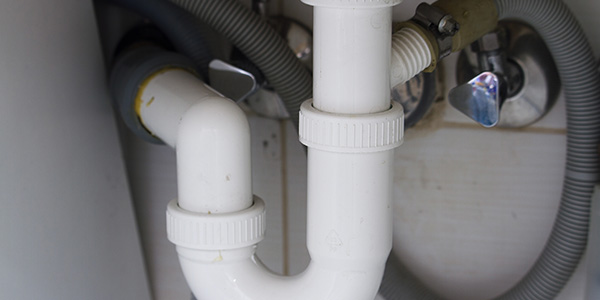
Other Issues
If your basement is dry but still smells musty, there are other issues to consider. Here are some other causes of foul basement smells.
- Drains: Check your floor drains or p-traps under any sinks in your basement. The p-trap is the u-shaped pipe in the sink drain system. They hold a small amount of water to keep sewer gases from rising into your home. If the sink isn’t used a lot, the liquid in the p-trap can dry out, allowing the gas to come up. Similarly, a dried-out floor drain will allow sewer gases to come up into your basement. Try pouring a few cups of water into your floor drains and basement sinks every so often.
- Pets: If you have pets, furniture and carpets may develop odors over time. Take steps to minimize these odors by cleaning and deodorizing — particularly after your furry friend has an accident.
- Mice: Not all animal smells are from the cute ones we want in our homes. Urine and droppings from invading rodents can create nasty smells. They can spread hantavirus and salmonella, as well. And if a mouse dies inside your walls, expect a foul odor for a time after. If you see evidence of mice or other nuisance animals, try these DIY pest control tips or call an exterminator.
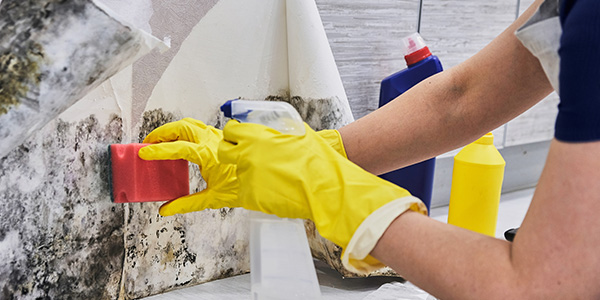
How to Get Rid of Basement Odor
Now that you’ve pin-pointed the reason for the offensive smell in your basement, it’s time to deal with it. Here are some simple ways to get musty smells out of your basement and eliminate moisture throughout.
Remove Mold and Mildew From Surfaces
There are a few ways to kill and clean mold and mildew from surfaces using household products, like bleach or undistilled white vinegar. Always wear PPE when dealing with mold.
Ventilate the area as much as possible. Open windows and doors to allow fresh air to enter. Use fans to keep the air circulating and to move cleaning agent vapors toward open windows and doors. You should keep the area ventilated even after you’ve finished cleaning to help air out the area.
If using bleach, first clean the hard surfaces affected by the mold with water and dish detergent. Then, use a diluted bleach solution to kill the mold. The CDC recommends mixing no more than 8 ounces of household laundry bleach per 1 gallon of water. Never mix bleach with other products, particularly ammonia. This will create toxic gases called chloramines that are corrosive to your eyes and lungs. Be sure to follow all safety instructions when using bleach.
Soak a stiff cleaning brush with the bleach solution and scrub the mold and mildew spots until they’re gone. Then, rinse the surfaces with clean water and a fresh sponge. Dry the area quickly and thoroughly. Using a fan or dehumidifier helps the drying process.
If you have pets or small children, you might consider an alternative to bleach. Pets can be particularly susceptible to bleach poisoning depending on how it’s used.
Undiluted white vinegar is a great natural way to kill mold. Fill an empty spray bottle with vinegar and use it to saturate the mold growth. Allow it to sit for at least an hour.
Then, fill a clean spray bottle with a teaspoon of baking soda and two cups of water. Shake well and spray directly onto the mold and any stains. Scrub with a scrub brush or scouring pad. Finally, clean the area with warm water.

Never mix vinegar with bleach or with hydrogen peroxide. Both mixtures create toxic chemicals.
You can also find special mold-cleaning sprays and solutions found at your local hardware store.

The EPA advises calling a mold remediation professional if there has been a lot of water damage or if mold covers more than 10 square feet.
Improve Water Management Around Your Foundation
When it rains, does the water pool around the foundation of your home rather than drain away? If so, this water can find its way into your basement if your foundation sits below grade.
You’ll need to address drainage issues in your yard. This includes anything from extending your downspout to improving your yard slope or pitch of the land around your foundation.
Waterproof Your Basement
Mold and mildew are sure signs that you need to waterproof your basement. Minor basement leaks are easily handled with a few DIY steps. These include replacing window wells outside of your home or cleaning your gutters and adjusting your downspouts.
For serious leaks coming through cracks in your basement walls or floor, we highly recommend contacting a professional waterproofing company. They will inspect your home and let you know what to do to keep a dry, odor-free basement long-term.
After you've waterproofed everything, learn how to finish your basement to increase your comfortable living space.
Insulate and Repair Your Pipes
Aside from repairing or replacing leaky pipes, insulating them alleviates condensation. Insulating your copper or PEX water pipes is easy enough for the average homeowner to handle.
- Buy foam or rubber pipe insulation at your local hardware store. Measure the length of the pipes you want to insulate to get an idea of how much foam pipe insulation you need.
- Using a utility knife, cut the insulation to the appropriate lengths to fit your pipes. Some insulation comes pre-slit. Otherwise, you’ll need to use your knife to slit the insulation yourself.
- Fit it over the pipes and seal it using duct tape. If your insulation is pre-slit, it may also have its own adhesive, which is helpful.
- Use fiberglass pipe wrap instead of foam in high-heat areas, like near your furnace or water heater. It’s also great if you’re insulating pipes with a lot of turns and bends.
Unless you have plumbing experience, we recommend hiring a plumber to handle leaks and more serious issues.

When buying pipe insulation, check the R Value on the product packaging. The R Value measures its thermal resistance, or its ability to resist air from passing through it. The higher the R Value, the more effective the insulation.
Seal or Replace Your Basement Windows
If the seals around your windows are breaking down, you can replace them with adhesive foam sealant. Caulking additional leaks around the exterior window frame is also a simple fix.
If you have window wells, clear out any leaves or debris that could be creating a clog. Consider installing a window well cover to prevent clogs.
For window frames with rusty metal or rotted wood, it might be time to replace them completely.
Absorb Musty Basement Smells with Baking Soda
Baking soda is a great way to naturally deodorize your basement. Set bowls of baking soda in the corners of your basement. It absorbs musty odors and can maintain absorbency for up to three months.

Note: Baking soda isn’t harmful to pets or kids unless it’s ingested in large amounts. That said, it’s probably a good idea to keep it out of their reach.
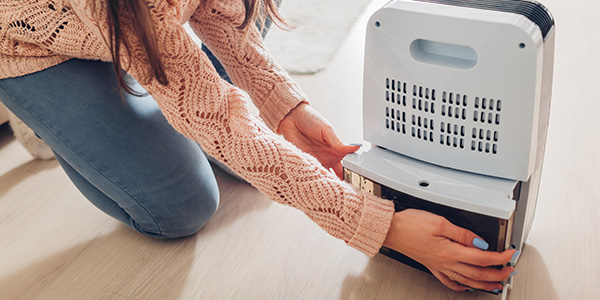
Keep That Musty Basement Odor From Returning
After going through all that trouble to get rid of mold and dry out your basement, prevent the odor and dampness from returning. Be sure to:
- Regularly clean your basement.
- Get a dehumidifier to regulate the humidity in your basement. Use a hygrometer to check the humidity level and keep it around 45% to 55% to prevent mold and mildew growth. Hygrometers measure the amount of water vapor in a given atmosphere. Common hygrometers in households include mechanical and digital.
- Take time to declutter your house, especially in the basement where stuff is “out of sight, out of mind.” Remember, having more cardboard boxes and furnishings in your basement means more surfaces for mold and mildew to grow on.
- Use plastic bins with lids when storing items — mold spores feed on cardboard boxes.
- Clean any clothing or furniture that may be harboring mold spores.
- Clear your gutters and downspouts, which are crucial to draining water away from your home’s foundation.
- Stay on top of repairing leaky pipes.
- Avoid putting carpet in your basement, because the fibers can absorb moisture.
Need some more ideas on how to finish your basement?
Follow our complete basement renovation guide!

